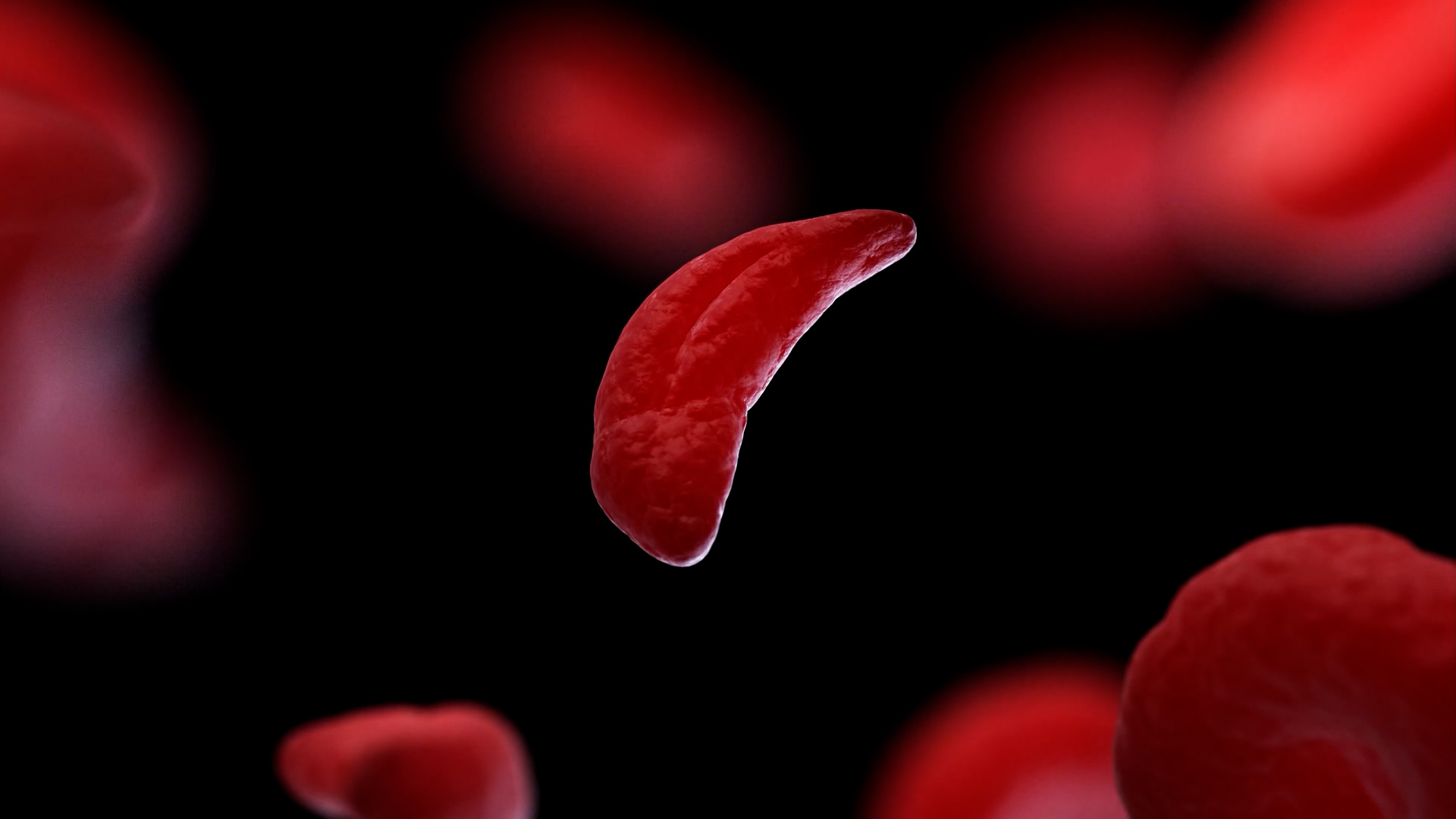Credit: Shutterstock
Among individuals with sickle cell disease, acute chest syndrome contributes to 25% of all deaths.
Among people with sickle cell disease—an inherited blood disorder—acute chest syndrome (ACS) is the leading cause of death. The condition is the result of red blood cells becoming stiff, sticky, and sickle shaped and clogging small arteries and veins in the lungs, thus blocking the flow of blood and oxygen in the organ. The airways become inflamed, and patients experience severe chest pain and difficulty breathing. “It’s like having pneumonia,” says Sean Stowell, a transfusion medicine physician-scientist at Brigham and Women’s Hospital in Boston.
Treatment for ACS is typically supportive and involves pain management, respiratory support, and transfusion therapy. In recent decades, researchers have been working toward better understanding the underlying mechanisms that lead to the onset and progression of ACS to develop targeted treatments.
Now, in a new study published July 16 in Science Translational Medicine (DOI: 10.1126/scitranslmed.adl4922), Stowell and colleagues demonstrate how the complement system—a group of proteins that are part of the innate immune system’s defense against pathogens and contribute to initiating an inflammatory response against injuries and infections— drives ACS.
Previous studies have shown that the rapid breakdown of sickled red blood cells results in the release of heme—an iron-containing molecule in hemoglobin—into the bloodstream. That breakdown can activate the complement system. A series of proteins in the system, numbered C1 to C9, get activated sequentially and undergo splitting to form fragments, such C3a and C3b or C5a and C5b. Scientists have suspected that elevated levels of these kinds of fragments may be contributing to severe and painful complications of sickle cell disease.
To understand the complement system’s involvement in ACS, Stowell and his team assessed the blood of 27 sickle-cell-disease patients experiencing ACS for signs of complement activation. The research team found elevated levels of complement fragments, including C3a and C5a, during ACS compared with 4–8 weeks after patients were discharged from the hospital. They also found decreased hemoglobin levels during ACS.
Similarly, in mice with sickle cell disease that received heme injections, the researchers saw increased complement activation, reduced hemoglobin levels, and ACS compared with control animals.
To understand if activating the complement system alone could trigger ACS, the researchers injected sickle-cell-disease mice models with a nontoxic complement-activating protein from cobra venom that’s used to bypass heme. Stowell and his team noted complement activation in both the model and control mice, but only the model group faced a higher risk of developing ACS and dying.
Sickle cells are particularly vulnerable to rupturing when the complement system is activated, Stowell says. The rupturing releases heme, which further activates the complement system and causes more rupturing. “Then everything goes haywire,” Stowell adds.
As a proof of concept, the research team targeted the complement system by blocking the C5 protein to see if that would protect mice with sickle cell disease from ACS. Inhibiting C5 improved lung function and reduced ACS-caused mortality in these rodents.
Stowell thinks targeting proteins upstream of C5 and thus closer to where the complement activation begins may be more effective. “But then you kind of block any ability of complement to be helpful in terms of fighting infections,” he says.
And while Stowell and his colleagues suggest that the complement system may play a more central role in driving ACS than previously postulated, they acknowledge that it’s not the only mechanism involved. Scientists have identified other pathways, but Stowell thinks the complement system potentially plays a more dominant role.
Karina Yazdanbakhsh, the director of research at New York Blood Center Enterprises, who specializes in transfusion medicine and wasn’t involved in the research, says the paper’s findings are extremely exciting. She hopes future studies will compare different complement inhibitors and assess how well these perform against drugs that target other pathways shown to be relevant to ACS.
Stowell and his colleagues are currently conducting research in mice to assess the most effective part of the complement system to target to better protect animals from developing ACS. Such legwork can help inform potential clinical trials in humans.
Chemical & Engineering News
ISSN 0009-2347
Copyright © 2025 American Chemical Society
